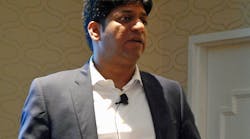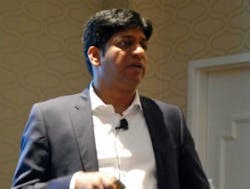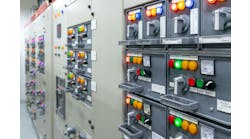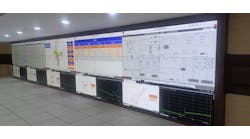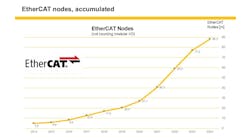“The big difference [with Forge] is the underlying knowledge that is built into the platform.” Honeywell’s Sandeep Chandran explained how users can quickly gain actionable insights using Honeywell Forge for Industrial software to analyze operational data from multiple databases and applications.
It’s not uncommon for organizations to seek productivity gains by bringing together and analyzing data from disparate silos of information. “A lot of initiatives are about consolidating data from multiple sources,” said Sandeep Chandran, lead for product management for Honeywell Connected Plant. “IT companies, such as Google, Microsoft and SAP are doing this. But what can you do with those same approaches? From a technology point of view, our focus is on solving industrial problems.”
This new category of software is intended to improve enterprise performance by effectively collecting, analyzing and acting on data from their operations. Honeywell Forge for Industrial, being launched this week at Honeywell Users Group Americas in Dallas, leverages 100 years of expertise in asset and process control technology to transform the way work gets done by owners and operators of industrial facilities and other critical assets and infrastructure.
Honeywell Forge converts data from equipment, processes and people into intuitive, actionable insights that enable monitoring of enterprise operations from a single screen, helping customers to optimize the efficiency, effectiveness and safety of their businesses. The software is designed with a hardware- and software-agnostic approach that allows for its use with existing systems. It leverages predictive analytics to identify maintenance issues before they happen; enable workers to be more productive, proficient and safe; reduce costs; and increase productivity.
“The big difference [with Forge] is the underlying knowledge that is built into the platform,” explained Chandran. “You have data and you have applications, including non-Honeywell systems. We have an engine that can go in and collect data from those systems as well.”
Built-in knowledge
Today’s operational challenges include longer, harsher operating cycles between turnarounds; differing outcomes across shifts, units, plants and enterprises; and a lack of integrated insights across the operating spectrum. Honeywell Forge is designed to address and standardize these challenges, as well as provide analytics, insights and recommendations that affect outcomes and profitability.
One of the key differentiators of this new software is how it deals with the speed of change and provides instant effectiveness. “The new wave of innovation includes cloud, IIoT, virtual reality, machine learning and digitalization,” said Chandran. “Software needs to be more than just a framework. It has to be pre-populated with knowledge.” Such built-in knowledge allows users to implement Honeywell Forge and begin to draw comparisons and uncover recommendations right from the start.
“We use Honeywell expertise and knowledge to augment that data,” explained Chandran. “And from that augmentation come recommendations. The focus has shifted from figuring out what needs to be done to which actions are best from an economic point of view. Because of the knowledge we have, the recommendations that come out are very precise. These are the recommendations that a process engineer or operator can take advantage of.”
A modular approach
Honeywell Forge for Industrial consists of four modules:
-
The Process Reliability Advisor module uses real-time operating data to detect and diagnose issues to improve unit performance. It leverages Honeywell UOP’s comprehensive process expertise to assess process constraints and proactively mitigate operational issues.
-
The Process Optimization Advisor module yields expert operational recommendations to utilize assets effectively and derive maximum profitability. It provides an optimal set of operating conditions, based on customer economics, for the unit to run at minimal cost and waste.
-
The Profit Performance Monitor module identifies degradation of unit performance and provides expert guidance through actionable instructions to maintain unit profit performance, and it provides visibility into the economic consequences of plant process performance as a cost of lost opportunity. It also ensures sustainable benefits over varying operating conditions, visualizing real-time unit profitability.
-
The Asset Performance Management module yields predictive analytics that deliver early insight to impending issues, as well as integrated process and asset data models that identify new levels of untapped productivity. Unified enterprise connectivity drives common workflow across engineering, maintenance and operations.
